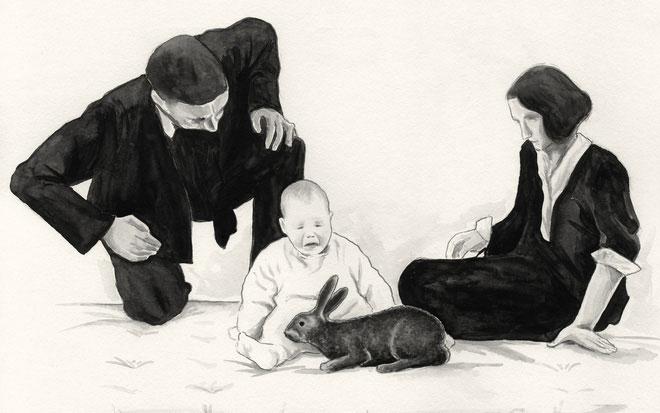The infamous experiment conducted by behaviorist John B Watson and his student Rosalie Rayner was condemned for adopting unethical practices. Both Watson and Rayner carried out the Little Albert experiment in the 1920s which became one of the classic psychology experiments despite being questioned for its unethical practices.
Watson and Rayner exposed the nine-month-old little Albert to a white rat to which he showed no signs of fear. Next, the experimenters exposed the infant to the sound of a hammer striking a suspended metal bar. Listening to the loud sound, little Albert showed signs of feeling uneasy and after some time started crying.
After a few days, both the experimenters exposed little Albert to the white rat again. However, while presenting the white rat to the infant, one of the experimenters struck a hammer on the suspended metal bar at the same time. Thus, each time little Albert touched the white rat, one of the experimenters struck the hammer on the metal bar to produce a loud sound. This was done repeatedly until little Albert started fearing the white rat without any loud sound being combined with it.
Thus, both Watson and Rayner classically conditioned little Albert to fear the white rats. Further, it was also concluded that such a fear response can be transferred to other stimuli similar to the white rat. These included rabbit, cotton wool, seal fur coats, etc.
Despite being an important experiment, the experiment is criticized for being unethical.
Criticism of the Little Albert Experiment
One of the commonly asked questions among researchers is “what was unethical about the little Albert experiment?”
Well, the following are the grounds on which the little Albert experiment is criticized.
1. Watson Harmed Little Albert
Watson harmed little Albert by conditioning him for the fear of white rats which did not exist previously. Such conditioning had the potential of causing a lifetime of suffering for the nine-month-old infant.
2. No Consent Was Taken From Albert’s Mother
Going by today’s code of ethics, researchers conducting experiments are required to take the prior consent of the participants or anyone authorized on their behalf. Watson and Rayner did not take any consent from Albert’s mother for undertaking the experiment.
3. Albert Was Not Given the Right to Withdraw
Much like the principle of informed consent, researchers today must give participants the right to withdraw from the experiment at any time. Such a right, too, was not given by Watson to little Albert and his mother.
4. Watson Did Not Follow Standardized Methods
The Little Albert experiment is also criticized for Watson not adopting standard methods of conducting the experiment. For instance, Watson took only one participant to conduct the experiment and draw conclusions. Similarly, he did not conduct the experiment in a controlled environment.
What are the Ethical implications of the Little Albert Experiment?
The following are the ethical implications of Little Albert experiment:
1. Humans Could be Classically Conditioned
One of the important ethical implications of the experiment is that one could condition emotional responses in humans. That is, an emotion such as fear could be instilled in humans for an object or event that did not exist ralier.
2. Experiment Became a Source to Understand Phobias
This experiment became one of the important initiating points to understand phobias. Further, this helped the researchers in understanding various ways in which such phobias could be treated.
Conclusion
The Little Albert experiment showcases how humans can be classically conditioned for emotional responses. No doubt the practices adopted were unethical, the experiment made it evident that conditioning has important implications in the real world, especially in child-rearing and development.


























































